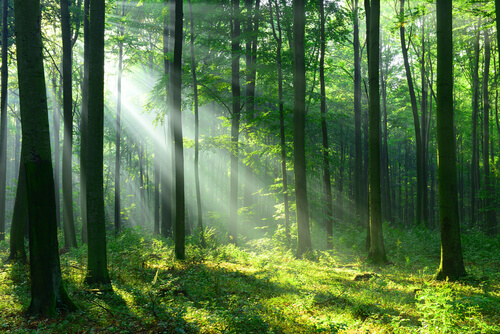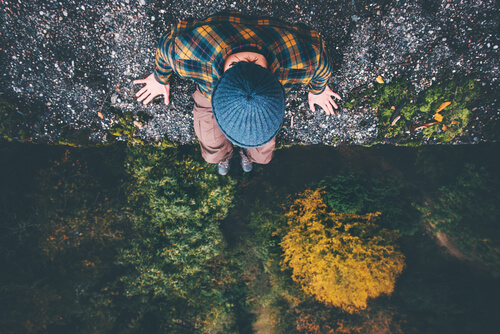Shinrin-yoku: Forest Baths for Relaxation

Shinrin-yoku consists of delving deep into a forest atmosphere. It’s a therapy for liberating the tensions offered nowadays by urban life. Furthermore, nature can be a good ally at times for re-establishing the health and quality of life for people who suffer from personal or work-related stress.
The term “shinrin-yoku” means to absorb the atmosphere of the forest in order to avoid illnesses related to the tension of large cities. Being in contact with unpleasant situations is believed to be one of the long-term causes of illness.
Forest Therapy or Shinrin-yoku
Forest therapy or shinrin-yoku emerged in 1982 in the Forestry Agency of Japan as an alternative for reducing stress levels. Precisely, it’s a therapy based on Buddhist and Shinto principles, that proclaim an integral contact with nature. Through the senses, the person establishes feedback with their natural surroundings to re-establish their inner peace.
Although the therapy emerged in Japan, it’s gained more and more followers around the world. It’s known as “baño de bosque” (in English, forest bathing) in Spain. As its name implies, it consists of passing into nature. Therefore, the individual achieves a state of relaxation without ingesting any kind of remedies.

The benefits of practicing shirin-yoku
Researchers at Chiba University, led by Yoshifumi Miyazaki, have taken up studying the possible benefits of being in full contact with the forest. By using a stress biomarker, they determined that subjects in contact with urban environments showed higher cortisol levels compared to those in contact with a natural environment.
By applying neurobiological techniques, they observed that the forest decreased cognitive activities and increased those related to pleasure. The trees gave off beneficial volatile compounds for the immune system, called phytoncides. These antimicrobial allelochemicals substantially benefit health and are often used in holistic medicine.
How to perform shinrin-yoku
Millions of Japanese people affected by stress practice forest therapy each year. Likewise, it’s also very accessible, thanks to the different official centers designated by the Forestry Agency of Japan. Shinrin-yoku therapy consists of entering the forest and doing various respiration techniques for two hours.
Experts monitor the participants before and after receiving therapy to see if they improved. Consequently, one can immediately test the treatment’s efficacy and note substantial changes to well-being. In short, you can appreciate the importance of shinrin-yoku in your emotional life.
Additionally, exposing yourself to nature doesn’t just improve your psychological balance and general well-being. It also stimulates changes in the nervous system. Precisely, it may positively influence irritability, anger, depression, anxiety, and tension.

Final reflections on shinrin-yoku
In conclusion, shinrin-yoku is a natural treatment you can do at any age. Practicing it will help you achieve an optimal state of relaxation. Furthermore, contact with nature improves your quality of life and emotional state. Thus, breathing, feeling the wind on your face, and going onward without worrying too much about anything are some of the pillars that made shinrin-yoku a global success.
“Throughout our evolution, we’ve spent 99.9 percent of our time in nature. Our physiology is still adapted to it. During everyday life, a feeling of comfort can be achieved if our rhythms are synchronized with those of the environment.”
-Yoshifumi Miyazaki-
All cited sources were thoroughly reviewed by our team to ensure their quality, reliability, currency, and validity. The bibliography of this article was considered reliable and of academic or scientific accuracy.
- Bertrán, Ana Rosa Castro, and Camilo Macías Bestard. Actualización bibliográfica sobre técnicas de relajación. Revista de Información Científica 65.1 (2010).
- Gesse, Á. (2018). Sentir el bosque: La experiencia del shinrin-yoku (baño de bosque). Grijalbo ilustrados.
- Peiró, Pablo Saz, and Shila Saz Tejero. Tierra, sol, agua y aire: aplicaciones terapéuticas en el paciente oncológico. Medicina naturista 8.1 (2014): 6-16.
This text is provided for informational purposes only and does not replace consultation with a professional. If in doubt, consult your specialist.








